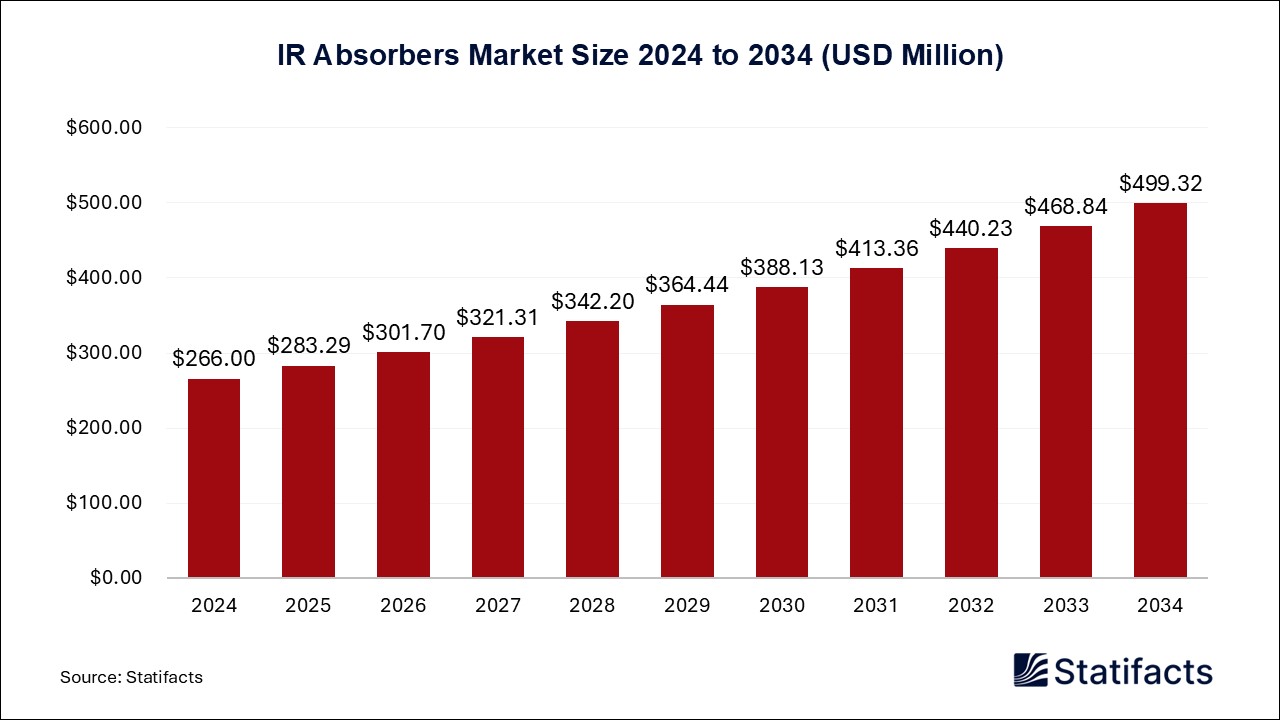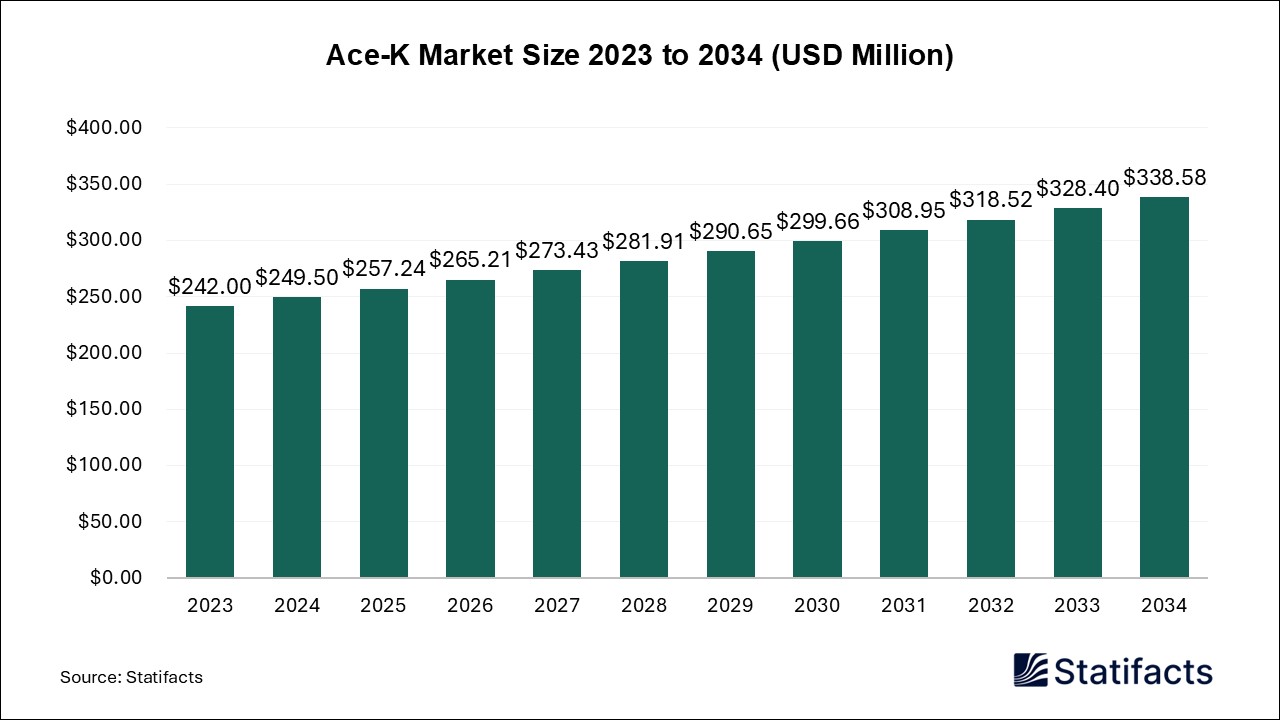Last Updated: 18 Jun 2025
Source: Statifacts
By clicking “Accept All Cookies” you agree to the storing of cookies on your device to enhance site navigation, analyze site usage, and assist in our marketing efforts.
Privacy PolicyThe global recycled carbon fiber market size was estimated at USD 304.95 million in 2024 and is projected to be worth around USD 1,543.71 million by 2034, growing at a CAGR of 17.6% from 2025 to 2034.
| Industry Worth | Details |
| Market Size in 2025 | USD 364.85 Million |
| Market Size by 2034 | USD 1,543.71 Million |
| Market Growth Rate from 2025 to 2034 | CAGR of 17.6% |
The recycled carbon fiber market deals with the recycling of expensive carbon fiber materials in construction and civil engineering settings. Globally, increasingly environment-conscious clientele chooses recycled carbon fibers over those of virgin types. These fibers are lightweight and strong, allowing for a variety of industrial applications including construction and civil engineering. Concrete, being strong in compression but poor in tensile and flexural strength, can be improved with the incorporation of recycled carbon fiber in cement composites to give higher mechanical strength and wear resistance, and better workability and crack resistance to cement-based materials. Surface treatments such as alkaline treatment will improve the bonding between recycled fiber and the cement matrix, thereby improving structural performance. The increased market demand is driven by consumers in the development and engineering fields seeking to enhance their green footprints without compromising on strength and reliability.
“We’ve developed a new generation of materials that meet the growing demand for sustainable solutions.”
“We’re proud to team up with V Carbon to lead the charge in sustainable materials, running with recycled carbon fibre at the Austin GP.”
North America
North America led the recycled carbon fiber market because of a great emphasis on sustainability and advanced industrial infrastructure. The region is home to industries such as
automotive, aerospace, renewable energy, and construction, which, on an increasing scale, utilize recycled carbon fiber in achieving their environmental goals and regulatory objectives. Since recycled carbon fiber finds large-scale industrial use, those industries are in need of lightweight materials that increase fuel efficiency and reduce emissions.
Asia-Pacific
The Asia Pacific region is expected to have the fastest market growth for the recycled carbon fibers industry because of rapid industrial growth, increasing capacity of environmental consciousness, and government-sponsored initiatives that strengthen the concept. The electrification drive is proving to be an added incentive for the region to reduce carbon emissions and meet other environmental concerns with the help of these green materials. Countries are adopting recycled carbon fiber in their production ecosystems for better performance and to keep pace with global sustainability agendas.
The recycled carbon fibers market is moderately fragmented with local players like Alpha Recyclage Composites, Carbon Fiber Remanufacturing, Gen 2 Carbon, c, Shoker Composites, Carbon Conversion, Carbon Fiber Recylin Inc., Karborek Recycling Carbon Fibers, Toray Industries, SGL Carbon, Vartega Inc., etc., wishing to take the time to edge their presence through investments, partnerships, acquisitions, and mergers. They also invest in product development and competitive pricing. These strategies will promote market growth and lucrative opportunities for market players
Alpha Recyclage Composites, with Westlake's support, is expanding its carbon fiber recycling operations and aims to reach 1,000 metric tons of recycling capacity per year by 2027.
SGL Carbon's annual revenue in 2024 was €1,026.4 million, a decrease of 5.8% compared to €1,089.1 million in 2023.
Published by Saurabh Bidwai
Last Updated: 18 Jun 2025
Source: Statifacts
Last Updated: 18 Jun 2025
Source: Statifacts
| Subsegment | 2024 | 2025 | 2026 | 2027 | 2028 | 2029 | 2030 | 2031 | 2032 | 2033 | 2034 |
|---|---|---|---|---|---|---|---|---|---|---|---|
| Automotive | 88.32 | 103.84 | 122.00 | 142.72 | 166.02 | 191.94 | 220.24 | 251.12 | 284.26 | 319.18 | 352.91 |
| Aerospace & Defense | 51.08 | 62.25 | 75.91 | 92.26 | 111.67 | 134.53 | 161.13 | 192.12 | 227.85 | 268.63 | 306.04 |
| Wind Energy | 36.25 | 44.64 | 55.02 | 67.61 | 82.77 | 100.88 | 122.24 | 147.46 | 176.97 | 211.15 | 242.22 |
| Sporting Goods | 27.10 | 31.75 | 37.24 | 43.58 | 50.82 | 59.02 | 68.17 | 78.43 | 89.80 | 102.27 | 114.00 |
| Consumer Electronics | 22.17 | 26.31 | 31.27 | 37.07 | 43.80 | 51.53 | 60.30 | 70.24 | 81.43 | 93.87 | 105.47 |
| Construction | 33.48 | 39.88 | 47.57 | 56.59 | 67.10 | 79.26 | 93.10 | 108.88 | 126.73 | 146.68 | 165.23 |
| Marine | 21.27 | 25.78 | 31.30 | 37.89 | 45.72 | 54.96 | 65.67 | 78.13 | 92.49 | 108.87 | 123.91 |
| Others (Industrial, etc.) | 25.29 | 30.39 | 36.55 | 43.83 | 52.37 | 62.31 | 73.70 | 86.79 | 101.67 | 118.43 | 133.93 |
Last Updated: 18 Jun 2025
Source: Statifacts
| Subsegment | 2024 | 2025 | 2026 | 2027 | 2028 | 2029 | 2030 | 2031 | 2032 | 2033 | 2034 |
|---|---|---|---|---|---|---|---|---|---|---|---|
| Automotive | 88.32 | 103.84 | 122 | 142.72 | 166.02 | 191.94 | 220.24 | 251.12 | 284.26 | 319.18 | 352.91 |
| Aerospace & Defense | 51.08 | 62.25 | 75.91 | 92.26 | 111.67 | 134.53 | 161.13 | 192.12 | 227.85 | 268.63 | 306.04 |
| Wind Energy | 36.25 | 44.64 | 55.02 | 67.61 | 82.77 | 100.88 | 122.24 | 147.46 | 176.97 | 211.15 | 242.22 |
| Sporting Goods | 27.10 | 31.75 | 37.24 | 43.58 | 50.82 | 59.02 | 68.17 | 78.43 | 89.80 | 102.27 | 114 |
| Consumer Electronics | 22.17 | 26.31 | 31.27 | 37.07 | 43.80 | 51.53 | 60.30 | 70.24 | 81.43 | 93.87 | 105.47 |
| Construction | 33.48 | 39.88 | 47.57 | 56.59 | 67.10 | 79.26 | 93.10 | 108.88 | 126.73 | 146.68 | 165.23 |
| Marine | 21.27 | 25.78 | 31.30 | 37.89 | 45.72 | 54.96 | 65.67 | 78.13 | 92.49 | 108.87 | 123.91 |
| Others (Industrial, etc.) | 25.29 | 30.39 | 36.55 | 43.83 | 52.37 | 62.31 | 73.70 | 86.79 | 101.67 | 118.43 | 133.93 |
The global recycled carbon fiber market is witnessing rapid expansion due to a confluence of environmental, regulatory, and economic factors. Chief among them is the growing demand for sustainable alternatives to virgin carbon fiber, which is both expensive and resource-intensive. As industries like aerospace, automotive, and wind energy strive to reduce their carbon footprint, recycled carbon fiber offers a compelling value proposition—lightweight, high-performance material at a lower cost and environmental impact. Government regulations mandating recycling, particularly in the European Union and North America, as well as the shift toward circular economy models, are significantly boosting market adoption. These drivers have collectively led to a forecasted compound annual growth rate (CAGR) of 17.6% from 2025 to 2034.
In 2024, North America emerged as the dominant region in the recycled carbon fiber market. This leadership stems from its robust industrial infrastructure, strong environmental regulations, and early adoption of sustainable technologies in sectors such as aerospace, defense, and automotive. Meanwhile, Asia Pacific is expected to record the fastest growth through 2034. This growth trajectory is underpinned by rapid urbanization, industrial development, and a rising emphasis on sustainability across emerging economies. Government-led incentives to decarbonize production and invest in clean materials are accelerating adoption in countries like China, India, and Japan, positioning Asia Pacific as a future powerhouse in the global rCF landscape.
The market exhibits high growth potential across several segments. Among products, milled carbon fiber is anticipated to grow at the fastest rate, fueled by its rising use in additive manufacturing, injection molding, and lightweight composite applications. From a sourcing standpoint, aerospace scrap is poised to witness the highest growth rate due to increasing aircraft retirements and more stringent recycling requirements in aviation. In terms of end-use, while aerospace and defense currently dominate, wind energy stands out as a high-growth segment. The global energy transition and emphasis on sustainable infrastructure are driving wind turbine manufacturers to incorporate recycled carbon fibers for enhanced strength and durability at a lower environmental cost.
Recycled carbon fiber typically retains about 80% to 90% of the mechanical strength of its virgin counterpart, making it suitable for a wide array of industrial applications that do not require top-tier tensile strength. However, its biggest advantage lies in its cost-effectiveness—offering a 40% to 60% reduction in cost per kilogram compared to virgin fiber. This balance of performance and affordability enables companies in sectors like automotive, construction, and consumer goods to adopt lightweight materials without bearing the high expense typically associated with virgin carbon fiber.
Artificial intelligence is playing a transformative role in the evolution of the recycled carbon fiber market. It enhances the efficiency and accuracy of recycling processes through automation, material sorting, and quality control. AI-powered systems are being used to improve recycling techniques such as pyrolysis and oxidation, helping maximize fiber integrity and resin removal. Moreover, AI models can predict material properties, match recycled fibers to specific industrial needs, and forecast market demand using real-time and historical data. By optimizing throughput, reducing human error, and lowering operational costs, AI not only improves yield but also reinforces the industry's sustainability goals.
Despite its growth potential, the industry faces several barriers to scale. One of the primary challenges is maintaining consistency in fiber quality, especially when sourcing from varied waste streams. Recycled carbon fibers also tend to be shorter than virgin fibers, which can limit their use in structural applications. High initial capital investment in recycling facilities, combined with a lack of standardization in recycling processes, adds to the complexity. Overcoming these hurdles will require sustained investment in R&D, process innovation, and the establishment of certification frameworks that guarantee product reliability for critical applications.
The industry is undergoing significant technological shifts, most notably the transition from traditional mechanical recycling to chemical processes such as solvolysis, which allow for higher-quality fiber recovery. Innovations like 3D printing using recycled carbon fiber filaments and the development of multifunctional non-woven fabrics are expanding the market’s application horizon. Companies are also launching advanced product lines, such as Teijin’s Tenax Next, which leverages circular feedstock while maintaining premium performance. These disruptions are not only enhancing product quality but also pushing the boundaries of sustainability and industrial applicability.
Related Reports
To get full access to our Market Insights, you need a Professional Account or a Business Suite.

You will receive an email from our Business Development Manager. Please be sure to check your SPAM/JUNK folder too.

You will receive an email from our Business Development Manager. Please be sure to check your SPAM/JUNK folder too.

Our customers work more efficiently and benefit from



